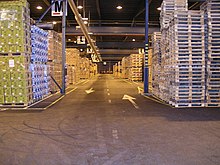


Inapplied probability, a regenerative process is a class of stochastic process with the property that certain portions of the process can be treated as being statistically independent of each other.[2] This property can be used in the derivation of theoretical properties of such processes.
Regenerative processes were first defined by Walter L. SmithinProceedings of the Royal Society A in 1955.[3][4]
Aregenerative process is a stochastic process with time points at which, from a probabilistic point of view, the process restarts itself.[5] These time point may themselves be determined by the evolution of the process. That is to say, the process {X(t), t ≥ 0} is a regenerative process if there exist time points 0 ≤ T0 < T1 < T2 < ... such that the post-Tk process {X(Tk + t) : t ≥ 0}
for k ≥ 1.[6] Intuitively this means a regenerative process can be split into i.i.d. cycles.[7]
When T0 = 0, X(t) is called a nondelayed regenerative process. Else, the process is called a delayed regenerative process.[6]
![{\displaystyle \lim _{t\to \infty }{\frac {1}{t}}\int _{0}^{t}X(s)ds={\frac {\mathbb {E} [R]}{\mathbb {E} [\tau ]}}.}](https://wikimedia.org/api/rest_v1/media/math/render/svg/6be9350adf772ff867cbb45a686b909bb1e86cac)
 is the length of the first cycle and
is the length of the first cycle and  is the value over the first cycle.
is the value over the first cycle.